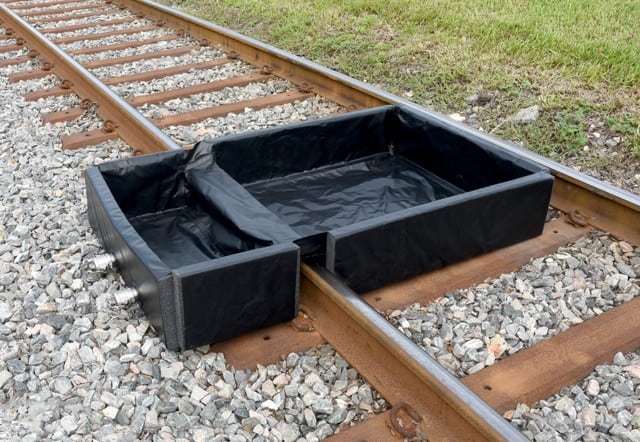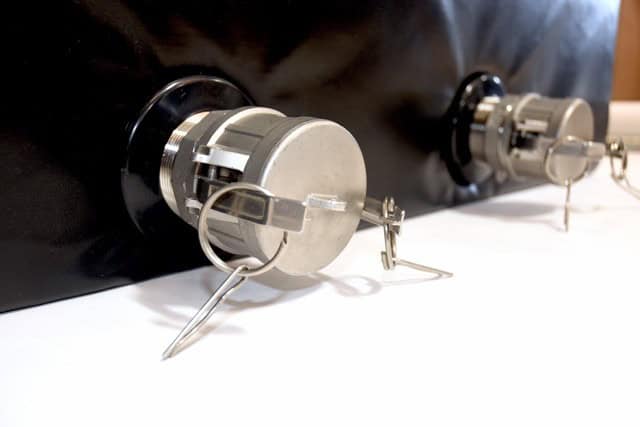Railroad tracks are more than just a pathway for trains. They can also play a significant role in protecting the environment, especially when it comes to tanker spills. Tanker spills are accidents involving the leakage or release of hazardous materials from tanker cars. These incidents can cause significant damage to the environment, affecting soil, water, and wildlife. However, railroad track berms can help mitigate these impacts. In this article, we’ll explore the environmental role of railroad track berms in tanker spills and how they can prevent environmental disasters.
What are Railroad Track Berms?
Railroad track berms are raised embankments or barriers constructed alongside railway tracks. They are typically made from soil, gravel, or other materials and serve various purposes. One of their primary functions is to provide stability and support to the railroad tracks. By reinforcing the tracks, berms help prevent derailments and other accidents. However, their importance extends beyond track stability, as they also play a crucial role in environmental protection.

How Do Tanker Spills Happen?
Tanker spills can occur for several reasons. Some common causes include derailments, collisions, mechanical failures, and human error. Tanker cars transport a wide range of hazardous materials, including oil, chemicals, and other toxic substances. When these cars are involved in accidents, the risk of spills and leaks increases significantly. Once the hazardous materials are released, they can quickly spread and contaminate the surrounding environment.
The Environmental Impact of Tanker Spills
Tanker spills can have devastating effects on the environment. The extent of the damage depends on the type and amount of material spilled, as well as the location of the spill. Some potential environmental impacts of tanker spills include:
- Soil Contamination: Hazardous materials can seep into the ground, contaminating the soil and making it unsuitable for plant growth. This can have long-term effects on agriculture and local ecosystems.
- Water Pollution: Spilled substances can enter nearby water bodies, such as rivers, lakes, and groundwater. This can harm aquatic life, disrupt ecosystems, and contaminate drinking water sources.
- Harm to Wildlife: Animals that come into contact with spilled materials may suffer from poisoning, injury, or death. The loss of habitat and food sources can also have long-lasting effects on wildlife populations.
- Air Pollution: Some hazardous materials can evaporate into the air, causing respiratory problems for humans and animals. Airborne pollutants can also contribute to climate change and other environmental issues.
How Railroad Track Berms Help Mitigate Environmental Damage
Railroad track berms serve as a first line of defense against the spread of hazardous materials during a tanker spill. Here’s how they help protect the environment:
Containment of Spilled Materials
Railroad track berms act as barriers that can contain and limit the spread of spilled materials. By preventing the hazardous substances from flowing further, berms help reduce the area affected by the spill. This containment allows for a more targeted cleanup effort, minimizing the overall environmental impact.
Protection of Sensitive Areas
Berms can be strategically placed to protect sensitive areas, such as wetlands, water bodies, and wildlife habitats. By directing the flow of hazardous materials away from these vulnerable locations, berms help prevent further environmental damage.
Support for Emergency Response
Railroad track berms can also aid emergency response teams in their efforts to manage and clean up spills. By providing a clear boundary around the spill site, berms make it easier for responders to assess the situation and implement containment measures. This can help speed up the cleanup process and reduce the overall environmental impact.

Designing Effective Railroad Track Berms
To maximize their effectiveness, railroad track berms must be carefully designed and constructed. Some key considerations include:
Material Selection
The materials used to construct berms must be durable and able to withstand the pressure of spilled materials. Common materials include soil, gravel, and concrete. The choice of material will depend on the specific needs of the site and the types of hazardous materials being transported.
Height and Width
The height and width of the berms should be sufficient to contain the potential volume of spilled materials. Engineers must consider factors such as the size of the tanker cars, the type of materials being transported, and the topography of the area when designing the berms.
Location and Placement
Berms should be strategically placed to protect sensitive areas and direct the flow of hazardous materials away from vulnerable locations. This requires a thorough understanding of the local environment and potential risks.
Challenges and Limitations
While railroad track berms can provide significant environmental protection, they are not without challenges and limitations. Some potential issues include:
- Cost and Maintenance: Constructing and maintaining berms can be expensive. Regular inspections and maintenance are necessary to ensure that the berms remain effective over time.
- Limited Capacity: Berms have a limited capacity to contain spilled materials. In cases of large spills, they may not be sufficient to prevent environmental damage.
- Environmental Impact: The construction of berms can have its own environmental impact, such as habitat disruption and soil erosion. It’s essential to balance the benefits of berms with their potential negative effects.
Conclusion
Railroad track berms play a crucial role in mitigating the environmental impact of tanker spills. By containing hazardous materials and protecting sensitive areas, berms help prevent environmental disasters and support emergency response efforts. However, their effectiveness depends on careful design, construction, and maintenance. As we continue to transport hazardous materials by rail, investing in well-designed berms is essential to protect our environment and reduce the risks associated with tanker spills.
By understanding the environmental role of railroad track berms, we can better appreciate their importance and work towards more sustainable transportation solutions.
Shop at Absorbents Online for Quality Railroad Track Berms
For those seeking reliable and effective solutions to enhance environmental protection during hazardous material transport, consider shopping at Absorbents Online. Specializing in high-quality railroad track berms, Absorbents Online offers products designed to meet precise containment needs and ensure the safety of our environment. With a commitment to durability, performance, and sustainability, investing in these berms means taking a proactive step toward preventing environmental damage. Visit Absorbents Online today to explore their range of products and find the ideal solution to safeguard your operations and the environment.